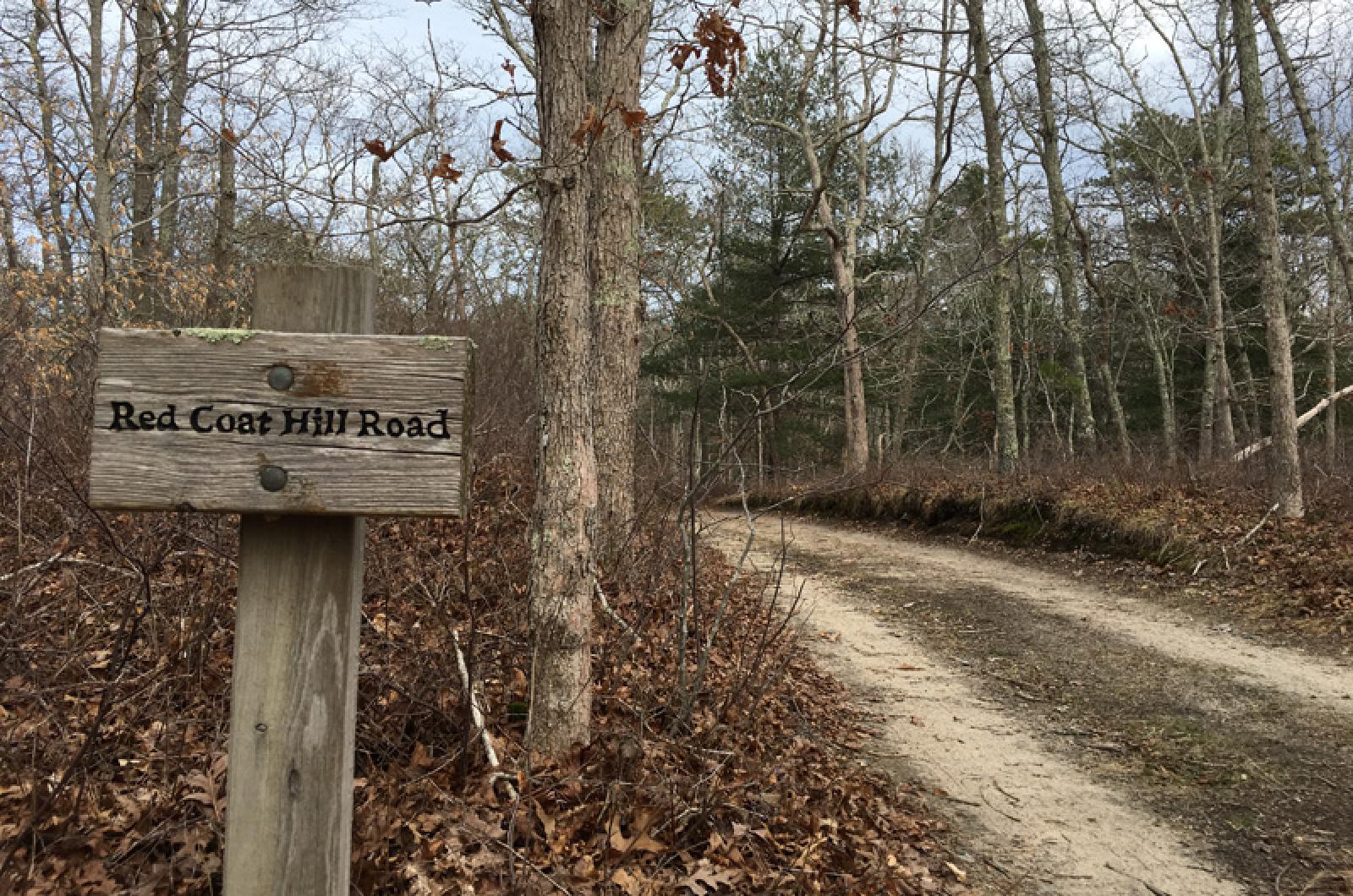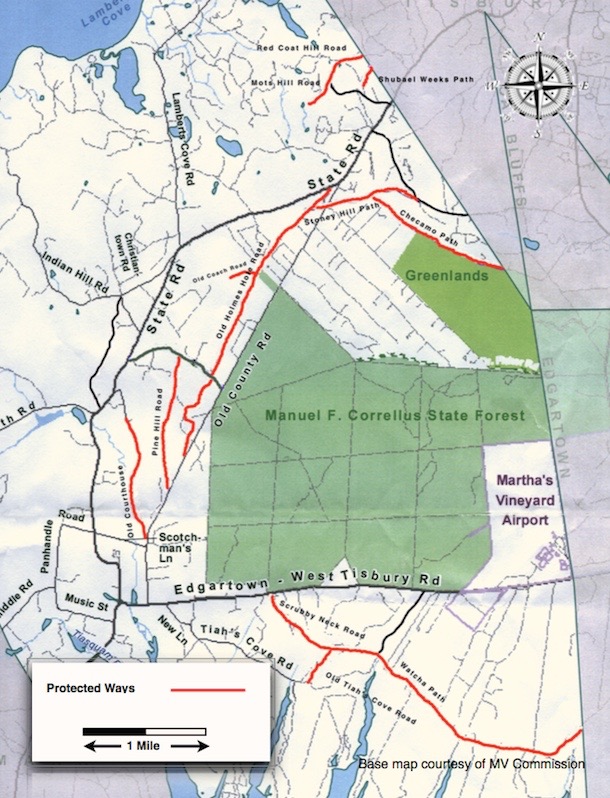They are the roads less traveled in West Tisbury. One was a mail route in the late 1800s, another was a Wampanoag fishing trail, and on another one a fleeing British soldier left his red coat.
On Saturday the West Tisbury byways committee will present a brief history of the old dirt paths and cart tracks that today are protected special ways within the town.
The event begins at 2 p.m. in the West Tisbury Library. Linda Coombs, a Wampanoag historian, David Foster, Harvard Forest expert and author of a recent book on the Vineyard, and John Alley, town native, will be the featured speakers on a panel moderated by Ann Bassett. A member of the original town byways committee, Ms. Bassett has family ties in West Tisbury date to the 1700s. “She grew up horseback riding, riding her bike and walking on those paths,” said byways committee chairman Harriet Bernstein.
During a recent walk along Motts Hill Road, once a part of a cart path and trail system that linked State Road and Lambert’s Cove Road, Ms. Bernstein talked about the significance of the ancient ways to the town.
“This path wasn’t cut yesterday,” she said. “We have these special ways, they are historic and they are kept in pristine condition. They bring a lot of integrity to a town.”
Historical maps will also be on display at the library event.
Most of the ancient ways of course are no longer used for their original purposes. Mail no longer travels along Old Coach Road, and Old Courthouse Road no longer ends at a courthouse. Rogers Path is no longer is the preferred path of carts on their way to Christiantown, but it does provide access to a historic town cemetery that dates to the Civil War.
And the mere fact that the winding paths still exist is a testament to the town’s character, Ms. Bernstein said. Once an ancient way is designated as a special way, it is protected 20 feet from the center on both sides. The paths cannot be obstructed and surrounding foliage is to be left uncut.
“It protects it in perpetuity,” Ms. Bernstein said. “For the historic reference of the town.”








Comments
Comment policy »